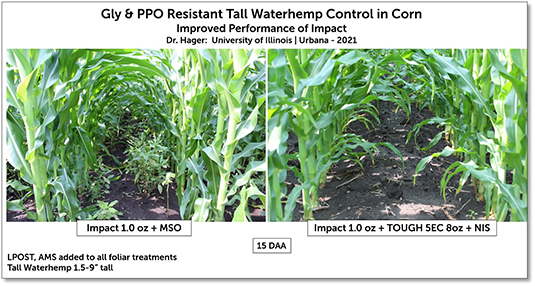Compaction Leaves Long-Lasting Impression
Retailers and growers know that agricultural equipment can cause compaction in no-till crop fields, but Ohio State University researchers have found that, depending on soil type, compaction can be severe and persist for years.
Based on 20 years of compaction studies at various locations in Ohio, just one year of harvest traffic on clay soils can reduce corn yields by as much as 40 percent, and the impacts from compaction can persist for as long as eight years. The research, "Axle-Load Impacts on Hydraulic Properties and Corn Yield in No-Till Clay and Silt Loam," has been published in the November/December issue of Agronomy Journal.
"This is one of the few long-term compaction studies in the nation. We know that equipment causes compaction, but we wanted to know how long that compaction lasts and how severe it really is," saus Rattan Lal, an Ohio State University soil scientist with the Ohio Agricultural Research and Development Center. "What we’ve learned is that it’s better to take steps to prevent compaction rather than run into the difficulties associated with compaction and struggle to try to eliminate it."
Lal and his colleagues made a one-time distribution with a single axle 20-ton grain cart and a single axle 10-ton grain cart across fields with two types of soil — clay and silt loam — and then measured how long it took for the fields to recover from the effects of compaction. While compaction from clay soils persisted for years, silt loam soils escaped serious compaction problems.
Lal says you and your growers can reduce the compaction hazard through a variety of methods:
- Practicing minimal tillage techniques, such as chisel plowing or subsoiling.
- Relying on soil critters, such as earthworms, to break up the soil through natural processes. The study found that compaction can have an impact on earthworm populations, decreasing numbers 70 percent in clay soils and 50 percent in silt loam soils.
- Growing a cover crop, such as alfalfa, that has a taproot system and can extend deep into the soil. Research Lal conducted in Africa using pigeon peas, a type of taproot plant, showed compaction was eliminated within two years.
- Leaving crop residue in the field. The residue acts as a buffer to dissipate any wheeled traffic.
- Using dual-axle instead of single-axle equipment and wider tires to distribute weight.
- Practicing controlled traffic — a method whereby all farm equipment is the same width so that traffic is confined to specific paths year after year, and the remainder of the soil is untouched.
- Planting or harvesting crops only under ideal environmental conditions. Lal’s compaction research also found that working in fields during rainy conditions increased the severity of compaction.
Compaction can have a number of impacts on the soil and the plants growing in it. Compaction destroys the soil structure and causes erosion by keeping water out. It prevents plant roots from penetrating deep into the soil, and traps carbon dioxide while preventing oxygen from reaching plant roots. The result suffocates the plant either killing the plant or impacting yield performance.






